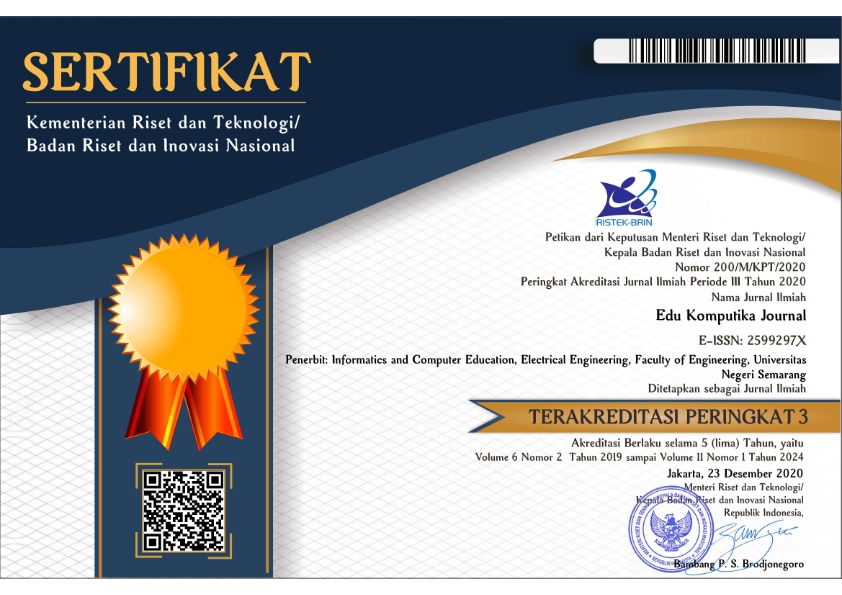Implementasi Capacitive Sensor pada Arduino dalam Perancangan Bonang Elektronik
Abstract
This aim of this research to create a clone hardware that can represent original Bonang Barung using existing technology. Capacitive sensors on Arduino was used to detect a touch on bonang. The touch was distinguished by the declaration pins of Arduino. Each pin represented one sensor for one tone. The tone was derived from recording original Bonang Barung stored in SD-Card WTV020SD-16P module. Furthermore, Arduino as microcontroller would select input to produce an output through the speakers. Testing was done by analyzing the frequencies and sensitivities that exist in electronic bonang. Results of the test were showed difference frequency of 1-9 Hz between the frequency of original bonang with electronic bonang. This difference was still relatively the same frequency in one tone. The use of different thickness metal in sensitivity testing was as good as the response from the sensor. On the use of resistors, the higher value of resistor would make higher sensitivity of the sensor. Based of the research could be concluded that the capacitive sensor could be applied to design electronic bonang by using appropriate resistor value that was 1 MW. The higher value of resistor would make sensitivity of electronic bonang higher too. The use of aluminum foil and aluminum plate with thickness 0.8mm, 1mm and 1.5mm with each side lengths 3cm, 4cm and 5cm were as good as for sensor response.
















